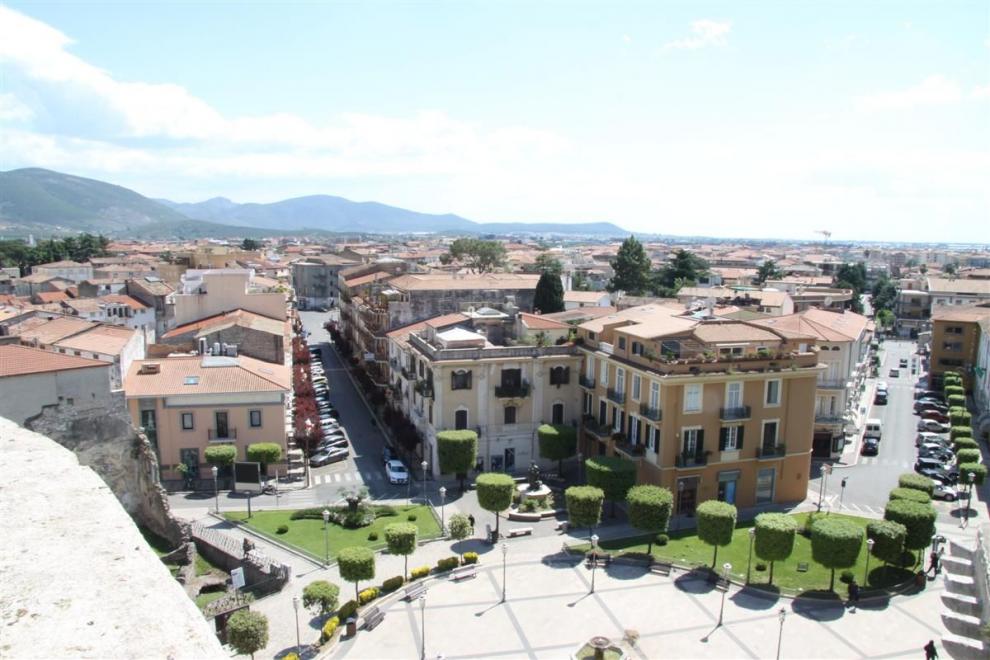Thessaloniki gets ready for its metro launch in November
The underground rapid transit lines have been under construction for almost two decades due to various project delays
 TheMayor.EU logo
TheMayor.EU logo 
Fondi has an ancient history, dating back to around 1000 BC and its first settlements. Later, the area was settled by the Italic tribes of Aurunci and later with Volsci.
The first historical references to Fondi date back to the year 338 BC, during the Latin War, when its inhabitants gained minor Roman citizenship status. After an unsuccessful attempt of revolt in 330 BC, Fondi remained a Roman prefecture. In 188 BC, Fondi received full city status.
The historical importance of Fondi lays in its position across the old Via Appia. Since 312 BC, it was for more than two millennia the main roadway from Rome to southern Italy.
After the Gothic War and the Lombard conquest of Italy, the city remained a dominion of the Eastern Roman Empire. Later a part of the Papal States was burnt out by the Saracens. Fondi was then passed to the Duchy of Gaeta.
In 1140 Fondi was granted to the Dell'Aquila family. But in 1299 it passed to the powerful Caetani barons. More precisely in the person of Loffredo Caetani, nephew of Pope Boniface VIII. For two centuries he made Fondi the centre of their power, as well as a hub of artistic development.
The Caetani lost Fondi after Charles VIII of France 's expedition to southern Italy. Fondi was assigned to the Prospero Colonna. During this period, Fondi entered another period of artistic and cultural splendour, thanks also to the court held by Giulia Gongoza, who lived in the town between 1526-34.
Fondi was sacked by Barbarossa in 1534. He was seeking to kidnap the beautiful Giulia and bring her as a gift to his emperor Suleiman, but she managed to escape.
Another sacking then took place in 1594 which triggered the decline of Fondi. The city was acquired by the di Sangro family in 1720.
In 1818 the already declining Fondi went through a malaria epidemic and the city lost the bishopric seat existing there since the very early years of Christianity.
Fondi is a city and municipality in the province of Latina, Lazio, central Italy. It is located halfway between Rome and Naples. The population of the city of Fondi is 39,800 people (2017).
It is the main town of the Plain of Fondi, situated between the Ausoni and Aurunci mountains and the Tyrrhenian Sea. The territory of Fondi is partially included in the Regional Natural Park of Monti Aurunci.
Fondi has an important market for agriculture and food products that distributes millions of tons of produce on an annual basis. The agri-food vocation of the Fondi plain has allowed the development of a considerable number of products that revolves around the biggest agro-food centers in Europe.
An already expanding sector in the city is tourism, with the number of hotel facilities and restaurants having grown in recent years. New bathing facilities have also been created thanks to the state property concessions derived from the approval of the Beach Plan.

Fondi is a city rich in artistic and archaeological beauties. In its historic center, tourists can cross the Appio Claudio course, which corresponds to the ancient Via Appia.
Here you can also discover megalithic walls, reticulates of the Roman era and the charming district of Judea, home to a Jewish settlement in Fondi before the 'advent of Christianity, and while there you can also visit the new Jewish Museum.
The city boasts a high number of breathtaking historic edifices. They are built in various eras, including the Castle and the Palazzo Caetani, the Churches of St. Pietro and St. Maria, the Convent of St. Domenico, the Monastery of San Magno with its frescoes of the XII century that retrace the life of St. Benedict.
The plain of Fondi is very rich in water, as evidenced by the presence of over twenty springs and three lakes: the Long lake, the St. Puoto lake and the lake of Fondi, which is the largest of the coastal lakes of Lazio. Fondi also offers a sandy coastline of about 13 km at the Tyrrhenian Sea, served by numerous outdoor accommodation facilities and hotels and located between the dune and the vast pine forests and eucalyptus forests.